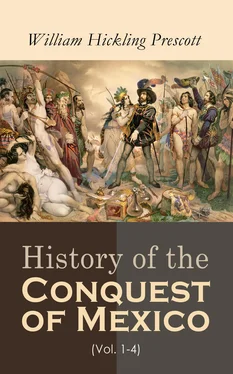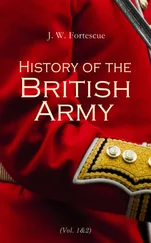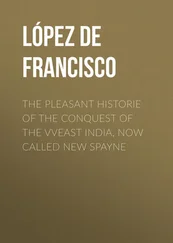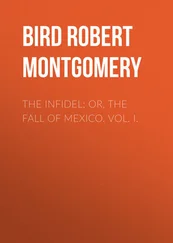[41]Ixtlilxochitl, Hist. Chich., MS., cap. 36.
[42][Robertson, in his History of America, was the first man to question the correctness of the judgment passed by the Spanish chroniclers upon the Aztec institutions. Subsequent American writers gave louder expression to his doubts. As has been said in the notes upon the preceding chapter, Mr. Morgan proved conclusively that the so-called “empire” was no empire at all, but only a confederacy of three tribes. Mr. Morgan, however, was sometimes led into inaccuracy and extravagance of statement because of his desire to place all the American aborigines on the same institutional plane.
Adolf Bandelier, pupil and disciple of Morgan, persevering and accurate scholar, investigated the subject in an entirely unprejudiced way and with a thoroughness which forces men to place almost implicit confidence in his conclusions. It is well here to summarize those conclusions.
The Mexican confederacy was made up of three tribes, the Aztecs, the Tezcucans, and the Tlacopans, who dwelt in neighboring pueblos.
Of these tribes the Aztecs and Tezcucans were superior to the Tlacopans. Spoils of war were always divided into five portions. The Tlacopans took one, their allies shared equally the other four parts. The Indian pueblos generally were designed to withstand a protracted siege, but the Mexican pueblos were almost impregnable. It is not likely that any other Indian tribes could have captured them. Dwelling securely in these great communal houses, which were also fortresses, the Aztec confederacy held many other tribes in subjection. It was only necessary for it to send its agents to other pueblos to secure at once the specified tribute. Failure to pay this tribute brought summary punishment at the hands of the warriors of the confederacy. The “empire” was “only a partnership formed for the purpose of carrying on the business of warfare, and that intended, not for the extension of territorial ownership, but only for an increase of the means of subsistence.” The subject peoples were never incorporated into the confederacy. The tribe remained intact. The houses the tribe occupied were common property, and so was the land cultivated. Neither land nor houses could be sold, and as the tribe increased in numbers new communal houses were built to accommodate the increase. The great fortress-dwellings in a, for savages, well-cultivated land prevented the subdivision of tribes which was constantly taking place in wilder North America.
Twenty clans, organized into four phratries, made up of the Aztec tribe. The clans were called “calpullis.” They were governed by a council of chiefs, “tecuhtli,” elected by the clan. There was an official head, the “calpullac,” whose duties were mainly civil, and also a military leader, the “ohcacautin” (“elder brother”). Painful religious ordeals accompanied the initiation of these men into office. Clan officers held their places during good behavior. Medicinemen, or priests, were members of the clan council. To the four phratries into which the clan was divided four quarters of the city of Mexico, each under its own captain, were assigned. Their titles were “man of the house of darts,” “chief of the eagle and cactus,” “blood-shedder,” and “cutter of men.” Of these captains the “chief of the eagle and cactus” was chief executioner. Their principal duty was to maintain order both within and without the pueblo. In each of these four quarters was an armory (“house of darts”), in which the weapons of the phratry were kept when its warriors were not engaged in warfare. The phratry was in Mexico primarily a military organization.
Twenty members, one from each clan, made up the tribal council which exercised supreme control over the Aztec tribe. The member who was chosen to represent the clan was called “tlatoani,” the “speaker,” and the council was called “tlatocan,” the “place of speech.” Sessions of the council were regularly held every ten days, and every eighty days an extra session was convened, to which the twenty “ohcacautins,” the four captains of the phratries, the two civil executives of the tribe, and some others were summoned. Its decisions were final.
As the clan had its civil head, or calpullac, so the tribe had a corresponding officer, the cihuacoatl, or “female snake.” The “snake woman” was always a man. He was chief judge of the clan and was elected for life by the tribal council. The “snake woman” was second in command to the “chief of men,” or tlacatecuhtli, the head war chief. While at first head war chief of the Aztecs, about the year 1430 the tlacatecuhtli was made head war chief and commander of the confederacy. Montezuma was “chief of men,” and the Spaniards saw him surrounded with such state that they not unnaturally supposed him to be king of the Aztecs. Montezuma’s position, however, was not at all that of a king, and most of the royal functions fell to the lot of the “snake woman.” Bandelier thinks the “chief of men” was only the chief military officer. He was elected by the “elder brothers” (ohcacautins) of the clans, the tribal council, and the leading priests, sitting in assembly. A principle of succession seems to have confined the election to members of a special clan. Moreover, from four officers—namely, a member of the priesthood called the “man of the dark house,” and the phratry captains called respectively “man of the house of darts,” “blood-shedder,” and “cutter of men”—the “chief of men” was always chosen. He exercised certain priestly functions after his election. His first official act was to offer incense to the war god Huitzilopochtli.{*} Montezuma was “priest commander” as well as “chief of men.”
{*} [Bancroft, Native Races of the Pacific States, vol. ii. p. 145.]
The “chief of men” held office during good behavior. He was, ex officio, a member of the tribal council, but he had little to do within the tribe limits. His functions were exercised outside the confederacy, and his special duty was to superintend the collection of tribute. His agents, called “crop-gatherers” (calpixqui), were appointed by the tribal council. It was their duty to visit the subject pueblos and to gather the tribute—maize, weapons, pottery, feather-work, female slaves, victims for sacrifice, or anything else which suited the victor’s fancy. The prisoners were forced to carry the other tribute to the tecpan, or tribal house, and were accompanied by couriers who saw that the tribute was duly delivered according to the directions given in picture-writing by the “crop-gatherers.” The office of calpixqui was most dangerous, being practically that of spy. All these institutions the Spanish historians noted without understanding. They supposed that there was a standing army; but every male was born a warrior, and so the people were the army. There was no nobility of any kind in Mexico. Merit alone determined the appointment to office. “No office whatever, no kind of dignity, was among the Mexicans transmissible by inheritance.”
Above the common warriors of the clan were two higher classes, the “distinguished braves” and the war chiefs proper. Among the “distinguished braves” were three classes, arranged according to attainments, none of the braves being elected, but all winning their place by valor. The war chiefs were elected. The “snake woman,” or “female snake,” acted as a check upon the head war chief, or “chief of men.” The two alternately took charge of forays. The elaborate decorations which adorned the “chief of men” in his official capacity may be seen represented in the sculptures at Palenque, especially upon the “tablet of the cross.”
The Aztecs conducted no long campaigns, and were not successful in protracted sieges, while they were always able to make a successful defence against enemies of their own class. Their pyramidal temples—teocalli—were admirable fortresses. In Mexico itself the causeways were essentially military constructions, and not simply roads to connect the city with the mainland. Captives taken in forays were “collared,” that is, they were secured by wooden collars fastened upon their necks. If they were specially unruly, and were continually striving to escape, the tendons of their feet were cut.
Читать дальше












